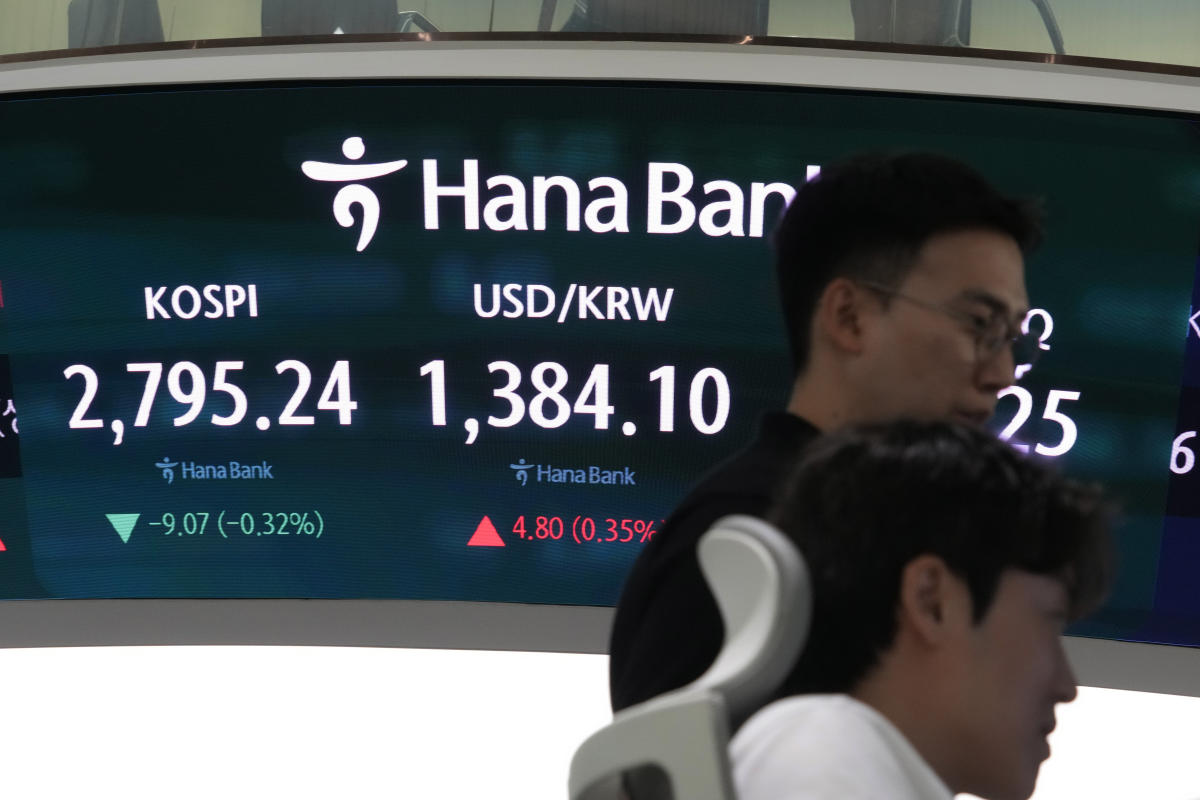The S&P 500 (SNPINDEX: ^GSPC) rose 14.5% in the first half of 2024. That momentum was initially driven by hopes for rate cuts. Investors entered the year thinking the Federal Reserve would cut its key interest rate six times. But persistent inflation called those expectations into question. The market now expects just two cuts later this year, he said CME GroupFedWatch Tool from.
Fortunately, enthusiasm for artificial intelligence (AI) has provided a second tailwind for the S&P 500. Investors have put aside their macroeconomic concerns and piled into AI stocks. For example, Nvidia alone has contributed about 30% of the S&P 500’s gains so far this year, while Microsoft, AlphabetAnd Amazon have collectively generated approximately 26% of profits.
The S&P 500’s performance in the second half of 2024 will depend on how these variables continue to evolve, but one stock market indicator says the index will maintain its upward momentum. Specifically, after double-digit returns in the first half of the year, the S&P 500 has almost consistently climbed even higher in the second half. Here’s what investors need to know.
History shows that the S&P 500 will rise in the second half of 2024
Going back to 1984, the S&P 500 has returned at least 10% 14 times in the first half of the year. The index continued to rise in the second half of the year 12 of those 14 times, or 86% of the time. The chart below provides more details.
|
Year |
S&P 500 first half return |
S&P 500 returns in second half |
|---|---|---|
|
1985 |
15% |
10% |
|
1986 |
19% |
(3%) |
|
1987 |
26% |
(19%) |
|
1988 |
11% |
2% |
|
1989 |
15% |
11% |
|
1991 |
12% |
12% |
|
1995 |
19% |
13% |
|
1997 |
19% |
10% |
|
1998 |
17% |
8% |
|
1999 |
12% |
7% |
|
2013 |
13% |
15% |
|
2019 |
17% |
10% |
|
2021 |
14% |
11% |
|
2023 |
16% |
7% |
|
Median |
n/a |
10% |
Data source: YCharts.
As shown above, when the S&P 500 has risen at least 10% in the first half of a given year, the index has gained an average of 10% in the second half of the year.
Past performance is never a guarantee of future results, but history does imply double-digit gains for the S&P 500 over the remaining months of 2024. That’s important because the S&P 500 is considered the best benchmark for the overall U.S. stock market. Investors can take advantage of that potential rise by buying individual stocks, particularly those that fall into the AI enabler category, or an S&P 500 index fund.
What investors should pay attention to in the second half of 2024
Wall Street will continue to fixate on inflation and interest rates in the second half of the year, so investors should keep an eye on both measures. The Federal Reserve expects inflation to cool to 2.5% this year, as measured by the personal consumption expenditures (PCE) price index, but policymakers could cut rates sooner than expected if inflation declines faster. That would, in theory, stimulate the economy and boost corporate profits, potentially pushing the S&P 500 higher.
Alternatively, the Federal Reserve could not cut interest rates at all this year if inflation remains high. In that scenario, high borrowing costs would continue to weigh on consumer and business spending, creating headwinds to economic growth that could lead to a recession. Even if the economy avoids a downturn, higher interest rates could lead to worse-than-expected financial results in the stock market, potentially sending the S&P 500 lower.
Furthermore, investors should be aware of the precarious situation regarding valuations. The S&P 500 currently trades at 26 times earnings, a premium to the five-year average of 23.3 times earnings and the 10-year average of 21.4 times earnings. That means that many stocks are expensive by historical standards, so any material bad news could have a particularly pronounced impact on the stock market.
Of course, these aren’t the only variables that could affect the S&P 500 in the second half of the year. They’re just the most downstream ones. Ultimately, anything that affects corporate earnings or investor sentiment—whether it’s the presidential election, geopolitical turmoil, breakthroughs in AI, or any number of unpredictable events—could affect the stock market for better or worse in the remaining months of the year.
With that in mind, here’s the most valuable insight I can offer: The stock market has consistently performed well over long periods of time. Economic downturns have dragged the S&P 500 through 14 market corrections and five bear markets over the past three decades, but the index has still returned 2,060% during that period, or 10.7% per year. So patient investors who buy and hold good stocks (or an S&P 500 index fund) at reasonable prices will likely be handsomely rewarded over the long term, regardless of how the stock market performs in the second half of 2024.
Should You Invest $1,000 in the S&P 500 Index Now?
Before buying stocks in the S&P 500 Index, consider the following:
The Motley Fool Stock Advisor The analyst team has just identified what they think is the 10 best stocks for investors to buy now… and S&P 500 Index wasn’t one of them. The 10 stocks that made the cut could deliver monster returns in the years to come.
Think about when Nvidia made this list on April 15, 2005… if you had invested $1,000 at the time of our recommendation, you would have $757,001!*
Stock advisor provides investors with an easy-to-follow blueprint for success, including portfolio building guidance, regular analyst updates and two new stock picks per month. The Stock Advisor has service more than quadrupled the performance of the S&P 500 since 2002*.
View the 10 stocks »
*Stock Advisor returns as of June 24, 2024
Suzanne Frey, an executive at Alphabet, serves on the board of directors of The Motley Fool. John Mackey, former CEO of Whole Foods Market, an Amazon subsidiary, is a member of The Motley Fool’s board of directors. Trevor Jennewine has positions in Amazon and Nvidia. The Motley Fool holds positions in and recommends Alphabet, Amazon, Microsoft and Nvidia. The Motley Fool recommends CME Group and recommends the following options: long January 2026 $395 calls on Microsoft and short January 2026 $405 calls on Microsoft. The Motley Fool has a disclosure policy.
This stock market indicator is 86% accurate since 1984 and points to a big move in the second half of 2024. Originally published by The Motley Fool







